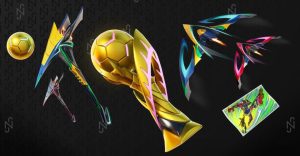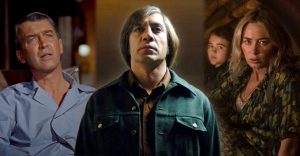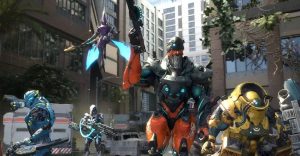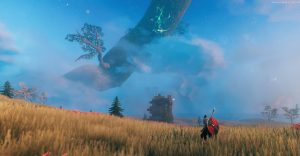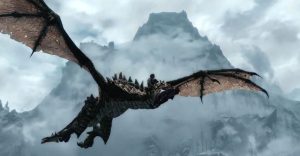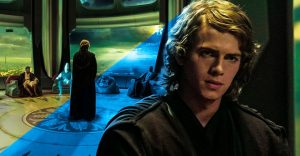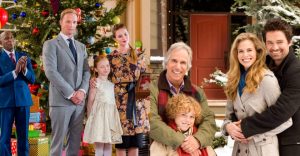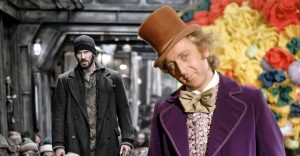How All The Cloverfield Movies Connect

With The Cloverfield Paradox, the Cloverfield franchise connects its three movies together into a sprawling continuity of multiple dimensions and timelines. But how exactly do the trio of films, released over the course of a decade, actually connect?
It’s hard to call Cloverfield a traditional film series. The 2008 original was one of the first examples of successful viral marketing, and its 2016 “sequel,” 10 Cloverfield Lane, was an entirely separate entity, seemingly establishing the franchise as an anthology series, with each entry having no bearing on its successors, save for their imaginative (if long-winded and ultimately superfluous to the films themselves) internet marketing promotions.
Read More: Cloverfield Deserves A Proper Sequel
Of course, Cloverfield is nothing if not unpredictable, and The Cloverfield Paradox, which was shadow-dropped on Netflix immediately following the Super Bowl, offers some interesting connections to the previous films. Through alternate dimensions, time travel, and the titular phenomenon of The Cloverfield Paradox, the three movies may actually be more connected than anyone previously thought.
This Page: How The Cloverfield Paradox Connects To The Original Film
What Is The Cloverfield Paradox?

Each of the Cloverfield movies following the original (including the upcoming WWII-set story, codenamed Overlord) started out as unique, stand-alone stories before ultimately being branded with the Cloverfield moniker and brought into the fold. The Cloverfield Paradox manages to theoretically unify the disparate situations of the various movies with its namesake reality-warping event.
In an early scene of the film, author Mark Stambler (who shares a surname with Howard, John Goodman’s character in 10 Cloverfield Lane) appears on a television, warning of The Cloverfield Paradox. The character, played by Donal Logue, explains that the particle accelerator science experiment in outer space has the potential to destroy the very fabric of space-time, causing multiple dimensions to collide and bleed into each other, changing the past, present, and future, completely upending reality itself.
Sure enough, the experiment – an effort to create a new energy source to end the current oil crisis on Earth – sends the Cloverfield Station into another dimension, where normal rules of nature no longer apply. The main plot, set on the Cloverfield space station, has the crew fighting a losing battle against an alternate dimension to which they do not belong, victims of warped reality struggling to right itself. However, that’s only part of the story.
Related: The Cloverfield Paradox Ending Explained
On Earth, The Cloverfield Paradox has caused widespread destruction in the form of at least two gigantic monsters, witnessed by Michael (Roger Davies). The first one is obscured by a thick cloud of smoke and ash, but it vaguely resembles the iconic monster from the original Cloverfield. In the final shot of the film, however, a super-sized version of that legendary beast makes a terrifying and glorious appearance, indicating that Cloverfield and Paradox do share more than just a title.
The Cloverfield Paradox Is A Cloverfield Prequel And Sequel

When Stambler talks about The Cloverfield Paradox, he is diving deep into quantum physics, unknown fields of science which may or may not even be theoretically possible. To that end, Paradox is both a prequel and a sequel to the original Cloverfield. It’s set in the future – from the ARG the year 2028 – but its energy experiment events directly influence the past, rippling across infinite dimensions and completely obliterating conventional understanding of time as a linear construct.
The particle accelerator causes distortions in time and space, bringing monsters from alternate dimensions to this reality but at different points in time; chronology is not linear but a flat surface which can fold in on itself, with all possible points on a timeline existing simultaneously. The events of 2028 caused the events of 2008, which then ripple through time and space in another dimension before taking effect at the moment of the modern day incident.
It’s a spacially-locked time travel mind game, and because the logic is only delivered in theory by Stambler it’s hard to draw resolute conclusions about how the timeline is rewritten. But, of course, that’s only fitting of a film called The Cloverfield Paradox.
- The Cloverfield Paradox/Cloverfield 3 (2018)Release date: Feb 04, 2018
- Overlord (2018)Release date: Nov 09, 2018
1
2
About The Author











